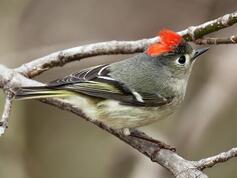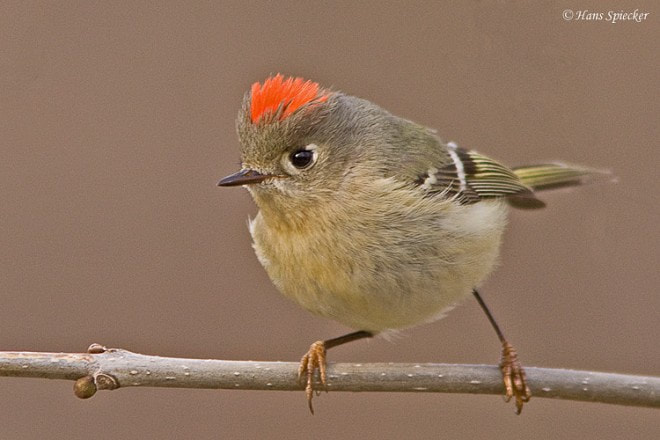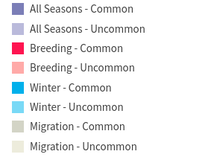“Have you ever thought of the migrating birds, and their destinations? Have you been wondering why these particular birds migrate, and why you can see them here in Oakland at some times of the year? Well I am going to cover that right here.”--Ethan Hajduk, 6th grade

Why do birds migrate right through Oakland?
The reason why birds migrate is the Great Pacific Flyway! So, what is the Pacific Flyway? According to The Pacific Flyway is a major north-south flyway for migratory birds in the Americas, extending from Alaska to Patagonia. Every year, migratory birds travel some or all of this distance both in spring and in fall, following food sources, heading to breeding grounds, or travelling to overwintering sites. There are many other flyways in North America, including the Central Flyway, the Mississippi Flyway, and the Atlantic Flyway. But the Pacific Flyway is the closest to us, really close.
Which birds migrate through The Great Pacific Flyway?
In Oakland, we can see long-billed curlew, dowitchers, whimbrel, western and least sandpipers, black-bellied and semi-palmated plovers and sanderling. Hayward Regional Shoreline is also a hotspot for birding in the autumn. Rare warblers, vireos and sparrows feed in the anise near the eucalyptus growing there. And we can also see my favorite migrating bird, the ruby-crowned kinglet. The Ruby-Crowned Kinglet really kept me company during zoom school, they never let me be lonely. They were always playing around with a mirror, or in my backyard pond. One time I saw two of them flying around the redwoods and took a video of them that I wish I could show. According to https://birdweb.org/Birdweb/bird/ruby-crowned_kinglet The Ruby-Crowned Kinglet is a fairly common breeder in the west, but they are not easy to find.
Where does the Ruby-Crowned Kinglet travel to?
The reason why birds migrate is the Great Pacific Flyway! So, what is the Pacific Flyway? According to The Pacific Flyway is a major north-south flyway for migratory birds in the Americas, extending from Alaska to Patagonia. Every year, migratory birds travel some or all of this distance both in spring and in fall, following food sources, heading to breeding grounds, or travelling to overwintering sites. There are many other flyways in North America, including the Central Flyway, the Mississippi Flyway, and the Atlantic Flyway. But the Pacific Flyway is the closest to us, really close.
Which birds migrate through The Great Pacific Flyway?
In Oakland, we can see long-billed curlew, dowitchers, whimbrel, western and least sandpipers, black-bellied and semi-palmated plovers and sanderling. Hayward Regional Shoreline is also a hotspot for birding in the autumn. Rare warblers, vireos and sparrows feed in the anise near the eucalyptus growing there. And we can also see my favorite migrating bird, the ruby-crowned kinglet. The Ruby-Crowned Kinglet really kept me company during zoom school, they never let me be lonely. They were always playing around with a mirror, or in my backyard pond. One time I saw two of them flying around the redwoods and took a video of them that I wish I could show. According to https://birdweb.org/Birdweb/bird/ruby-crowned_kinglet The Ruby-Crowned Kinglet is a fairly common breeder in the west, but they are not easy to find.
Where does the Ruby-Crowned Kinglet travel to?

According to AllAboutBirds.org’s Ruby-crowned Kinglet Range Map, they are short-distance migrant birds. Ruby-crowned Kinglets breed across far northern North America as well as the western mountains. Most migrate to the southern and southwestern United States and Mexico for the winter—but some mountain populations in the West simply move to lower elevations during the cold months.
Diet
The ruby-crowned kinglets prefer mainly insects in their diet . In all seasons, (except in the winter when they will eat some seeds, sap, and berries) their diet is primarily small insects. Typically, the birds concentrate on whatever is most readily available. This includes many small beetles, flies, leafhoppers, true bugs, caterpillars, and many others. Kinglets also eat spiders, pseudoscorpions, and many types of insects, including aphids, wasps, ants, and bark beetles. (They will also eat the eggs of insects and spiders.)
Facts about the Regulus calendula/Ruby-crowned kinglet
Order: Passeriformes
Family: Regulidae
Some facts from AllAboutBirds.org:
Eggs
There are 7-8, sometimes 4-9 eggs. In the Pacific Northwest, the kinglet produces 9-10 eggs, sometimes
even 7-12, and that is a pretty large clutch for such a small bird. The eggs of the ruby-crowned kinglets often have brown spots that are usually concentrated at the larger end of the egg. Only the female keeps the eggs warm, about 13-14 days. Male may feed females during incubation. (keeping eggs warm). Both parents feed nestlings until their young leaves the nest about 16 days after hatching. (1 brood per year.)
This species might come to backyards like mine if food is available. The time you are most likely to see them is in October, as they like to have a water source near them, that is probably why they came to my backyard. Hopefully you see a Ruby-crowned Kinglet this year too!
Some other websites I used were:
https://www.audubon.org/field-guide/bird/ruby-crowned-kinglet
https://www.allaboutbirds.org/guide/Ruby-crowned_Kinglet/overview
https://birdweb.org/Birdweb/bird/ruby-crowned_kinglet
https://en.wikipedia.org/wiki/Pacific_Flyway
https://davesgarden.com/guides/articles/view/609
Diet
The ruby-crowned kinglets prefer mainly insects in their diet . In all seasons, (except in the winter when they will eat some seeds, sap, and berries) their diet is primarily small insects. Typically, the birds concentrate on whatever is most readily available. This includes many small beetles, flies, leafhoppers, true bugs, caterpillars, and many others. Kinglets also eat spiders, pseudoscorpions, and many types of insects, including aphids, wasps, ants, and bark beetles. (They will also eat the eggs of insects and spiders.)
Facts about the Regulus calendula/Ruby-crowned kinglet
Order: Passeriformes
Family: Regulidae
Some facts from AllAboutBirds.org:
- The Ruby-crowned Kinglet is a tiny bird that lays a very large clutch of eggs—there can be up to 12 in a single nest. Although the eggs themselves weigh only about a fiftieth of an ounce, an entire clutch can weigh as much as the female herself.
- Ruby-crowned Kinglets seem nervous as they flit through the foliage, flicking their wings nearly constantly. Keeping an eye out for this habit can be a useful aid to identifying kinglets.
- Metabolic studies on Ruby-crowned Kinglets suggest that these tiny birds use only about 10 calories (technically, kilocalories) per day.
- The oldest known Ruby-crowned Kinglet was a female, and at least 4 years, 7 months old, when she was recaptured and re-released during banding operations in California in 2007. She had been banded in the same state in 2003.
Eggs
There are 7-8, sometimes 4-9 eggs. In the Pacific Northwest, the kinglet produces 9-10 eggs, sometimes
even 7-12, and that is a pretty large clutch for such a small bird. The eggs of the ruby-crowned kinglets often have brown spots that are usually concentrated at the larger end of the egg. Only the female keeps the eggs warm, about 13-14 days. Male may feed females during incubation. (keeping eggs warm). Both parents feed nestlings until their young leaves the nest about 16 days after hatching. (1 brood per year.)
This species might come to backyards like mine if food is available. The time you are most likely to see them is in October, as they like to have a water source near them, that is probably why they came to my backyard. Hopefully you see a Ruby-crowned Kinglet this year too!
Some other websites I used were:
https://www.audubon.org/field-guide/bird/ruby-crowned-kinglet
https://www.allaboutbirds.org/guide/Ruby-crowned_Kinglet/overview
https://birdweb.org/Birdweb/bird/ruby-crowned_kinglet
https://en.wikipedia.org/wiki/Pacific_Flyway
https://davesgarden.com/guides/articles/view/609




